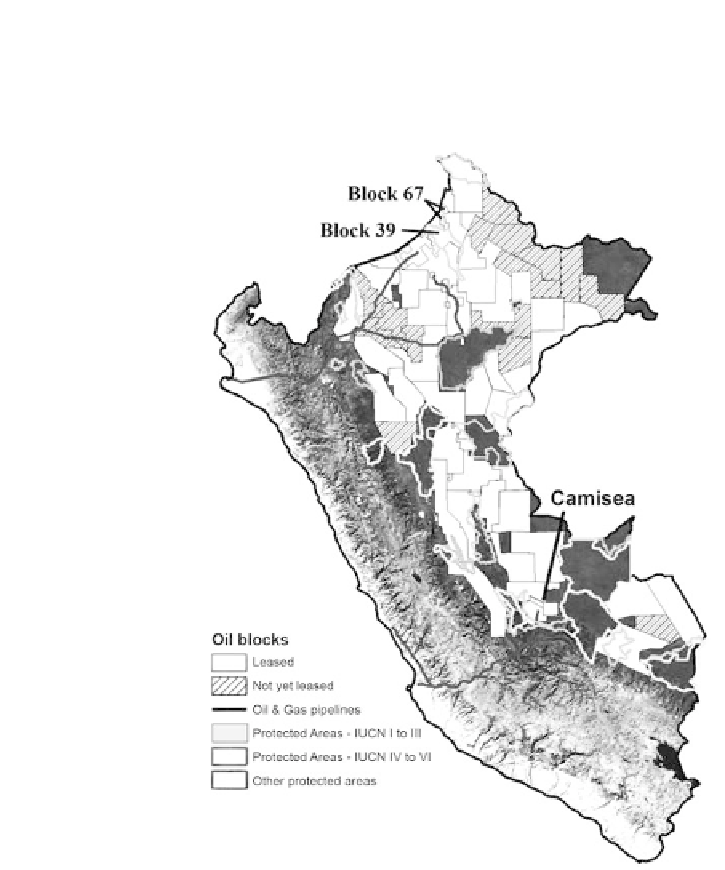Environmental Engineering Reference
In-Depth Information
blocks leased out over the last 4 years begin operations on the ground. In 2007 alone,
the government approved the Environmental Impact Studies (EIS, see below) for 10
blocks that are set to begin immediate seismic testing and drilling of exploratory wells.
Figure 4.
Focus on Peru.
Oil and gas blocks in Peru, including all IUCN categorized Amazonian
protected areas, protected areas not yet placed in an IUCN category, and key features discussed in
the text.
The Ecuadorian government has zoned ~65% of the Amazon for oil activities
(~52,300 km
2
) (Figure 5). Blocks overlap the ancestral or titled lands of ten indig-
enous groups. Oil development began in the north in the 1970s. The oil frontier in
Ecuador has now shifted south, where a quarter of Ecuador's untapped oil reserves
lie in Yasuní National Park, the country's principal Amazonian national park. Unlike
Peru, Ecuador permits oil and gas extraction in national parks. In January, 2007, the
Ecuadorian government, however, delimited a 7,580 km
2
“Zona Intangible”—an area
off-limits to oil, gas, and logging activities—via Presidential Decree in the southern
















Search WWH ::

Custom Search